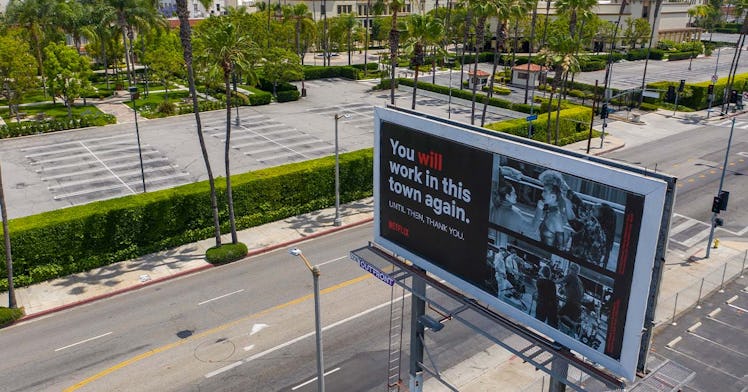Why the “Labor Shortage” Could Be Good for American Families
Anecdotal reports of a labor shortage are everywhere. But it might not be a real problem.

The COVID-19 pandemic is a new bad thing that exposed a lot of old bad things, among them a labor system that is heavily titled toward the interests of the employers at the expense of workers at nearly all class levels. And surprisingly to those of us inured to hyperpartisan inaction in the face of crisis, Congress responded to this crisis with something more than platitudes: extended unemployment insurance, direct payments to American families, stimulus checks, eviction moratoriums, and more. But in recent weeks many people have started chattering about how this help is messing with the labor market and causing a labor shortage. But is the labor shortage actually real? And what does it mean?
Americans received help during the pandemic. Collectively, the laws passed in response to the COVID-19 crisis have made the unemployment system friendlier (though it still has problems) to workers. States administering the unemployment program received more funding to deal with the mass influx of applicants, and eligibility rules were loosened so more workers could take advantage of unemployment insurance.
Crucially, the federal government also supplemented the amount of money unemployed workers received. Currently, all workers who are eligible to receive unemployment benefits through their state programs are automatically receiving an additional $300 a week. For perspective, a full-time worker making the federal minimum wage of $7.25 an hour takes home $290 a week.
This didn’t make much of a difference when businesses, because of either government order or a simple lack of demand from consumers, closed their doors. But now that vaccination numbers are climbing and government restrictions are disappearing, some employers who want to (re)hire and fully reopen see this extra unemployment money as a problem. With a higher income floor, they say workers are less eager to return to the workforce, a still risky proposition given that the pandemic is far from over.
But is it an issue? Or is it just a series of anecdotes from self-interested employers about too much government help affecting certain labor markets in a way that is costing them money?
To be clear, wages are just one part of the problem. Quality childcare is still difficult to find, and fears of a pandemic that is far from over are certainly reasonable. But many business owners are focusing their ire squarely on the more generous unemployment benefits, rather than the growing pains of a reopening economy. Blaming unemployment also serves a conservative agenda that prioritizes decreasing government aid and, crucially, allows business owners to avoid the obvious but inconvenient solution to their problem.
The simplest way to solve the problem they’re focusing on, if it is a widespread issue, is to make returning to work more enticing by raising wages. That’s how the system is supposed to work. Workers act rationally—staying home during a pandemic instead of risking their and their family’s health for meager wages—and employers respond rationally by using higher wages to make returning to work more attractive to potential employees.
Many employers realize this. One journalist in Pittsburgh found that a variety of businesses—an ice cream parlor, sports bar, amusement park, lumber company—became inundated with applications after they publicly announced that they were raising their wages. People wanted to work, but they wanted to do so at a wage that made sense for the risk level.
Still, some businesses have resorted to calling workers and the country at large “lazy” in sympathetic local news pieces and blaming employees for not wanting to work anymore, when it may just be the market at work, valuing some labor more expensively than it was prior to the pandemic.
But the picture of labor shortages is clearly not so simple.
Namely, it’s a good thing when American workers hold out for better wages and working conditions, and companies that are willing to participate in the free market by raising wages clearly will have a large pool of qualified applicants eager to work. That’s not a labor shortage issue — that’s workers waiting for the right wage for a risky job. Because wages aren’t growing to meet positions that are staying empty, calling it a labor shortage is premature at best.
And, in fact, Treasury Secretary Janet Yellen has cautioned her economic team against fearing stories of worker shortages, saying that it could so far be anecdotal and that more time and data is needed in order to see if there’s a real problem when it comes to labor shortages. One Economic Policy Institute official told The Washington Post that there are 80 percent more unemployed workers than job openings in the hospitality sector, for example, suggesting that there really isn’t a problem in some industries, while others might have more trouble filling roles. Either way, blaming unemployment insurance on people not returning to work is a mistake.
But some states are attempting to buck the trend. Montana became the first state to opt-out of the extra federal unemployment benefits, with Governor (and convicted journalist assaulter) Greg Gianforte saying “I hear from too many employers throughout our state who can’t find workers.”
Gianforte’s decision is the desired result of what journalist Adam Johnson has called “informal capital strikes,” when businesses withhold investment (in this case, wages paid out to workers) in order to secure a policy change (in this case, the end of more generous unemployment benefits). When you think about it this way, it’s the businesses—not the workers—who are seeking to disrupt the status quo, despite their protestations to the contrary.
Other states with Republican governors are likely to follow Montana’s lead. For the rest of the country, the more generous federal unemployment benefits are slated to end on September 6. What happens to a labor market that’s likely to be tight (even though it will not be entirely safe from COVID-19) remains to be seen.